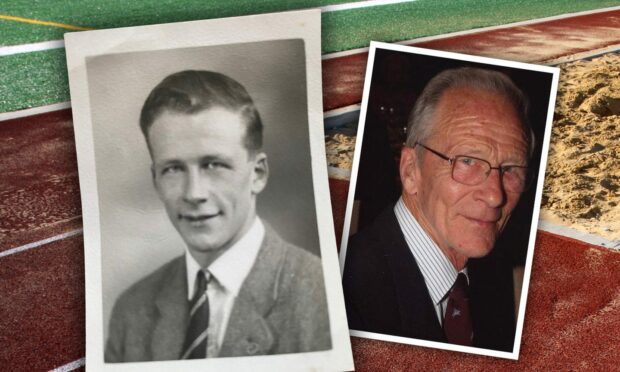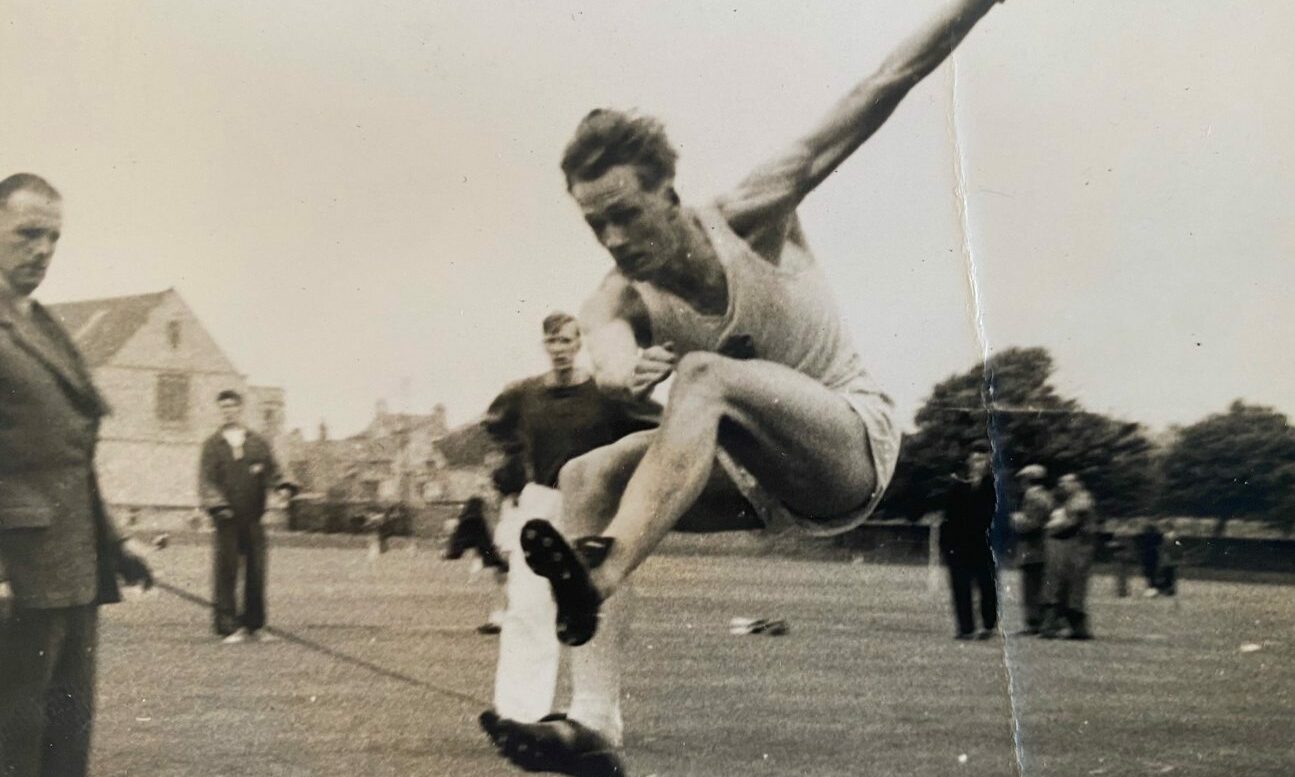Hugh Murray, a leading Scottish and British international athlete who specialised in triple jump, has died aged 88.
Scottish champion on three occasions, he also represented Scotland in the 1958 Empire and Commonwealth Games in Cardiff while later that year performed with distinction for Great Britain in contests against the Commonwealth and France.
In the Commonwealth match he leapt 48’ 2’’, one of his best marks, to finish third and first Briton.
In addition to competing for Scotland in three international fixtures, all of which he won, Hugh also claimed several Scottish Universities’ titles for Edinburgh and represented the army, having won the Army and Inter-Services Championships.
He also broke the Scottish record for the event but initially that was not recognised due to a rule requiring the athlete to be Scottish born.
After he made representations, the rule was changed to permit Scottish parentage and his record could be accepted.
Away from the athletics arena he was an empathetic, highly-regarded GP with Edinburgh University Students’ Health Centre for almost 30 years.
Hugh Miller Murray was born in Colwyn Bay, Wales, the second of four children to William and Elizabeth.
His elder brother was Douglas and two younger sisters, Margaret and Alison. His father was a chest physician in a tuberculosis sanatorium.
In 1939 the family moved to New Cumnock in Ayrshire where his father was appointed superintendent of the sanatorium and Hugh began school at the local primary.
In 1945 the family moved to East Lothian where William took up another tuberculosis-related appointment at East Fortune Hospital, at which point Hugh started at Dollar Academy as a boarder.
He was a bright pupil, attaining six Highers by he age of 16 and a year later recording his first significant athletics achievement, finishing third at triple jump in the Scottish Schools’ Championships.
Chariots of Fire
Winner that day and future rival was Tom McNab, later a multi-talented figure and worldwide athletics authority well known for his involvement in the making of the film Chariots of Fire.
After leaving school where he had been drum major, he began studying medicine at Edinburgh University where his athletics career gathered momentum as he placed third at the Scottish Championships in 1954.
Over the next nine years he won the title three times and was twice runner up. He represented Scotland in internationals three times against Ireland and Wales, winning each time while a highlight was competing for Scotland in the 1958 Empire Games, a memorable experience although he was disappointed with his performance, having suffered “an off day”.
Shortly after he redeemed himself with an excellent leap in the Great Britain against the Commonwealth match at London’s White City, securing third place behind the Empire Games gold and bronze medallists, finishing first Briton.
Field comeback
In 1957 he demonstrated versatility, winning bronze at javelin in the Scottish Championships while, in 1971, he staged a brief jumping comeback to compete in the Scottish Championships, finishing two places in the annual ranking list above a certain young triple jumper, Allan Wells.
Hugh captained the university athletics team, was awarded a Blue and in his final year was appointed president of the students’ union.
After graduating he was called up for National Service in the RAMC, served with 3 Parachute Regiment in the UK, Aden, and Germany where he parachuted over the Kiel Canal.
After National Service he landed a post as personal physician to General Robert Johnson II on a two-year round-the-world yachting cruise. Johnson was president of healthcare company Johnson and Johnson.
Canada
Following that, Hugh took up an appointment as GP in Saskatchewan, Canada, through a combination of a spirit of adventure and the need for doctors there.
When back in Edinburgh on holiday in 1967 he met Janice Russell a physiotherapist who shared a flat with his sister, Alison, and a year later they married in West Linton, going on to enjoy a long, happy marriage during which they had children Jean and Alastair and lived mostly in Fairmilehead area of Edinburgh.
In 1970 Hugh joined the university health service as GP where he continued until retirement in 1998.
A regular attender at Murrayfield for internationals he was a keen curler with the West Linton club and for the BMA while he also played golf at Baberton and Luffness.
A lover of the great outdoors since his days at Dollar, he and Janice succeeded in completing all the Munros.

